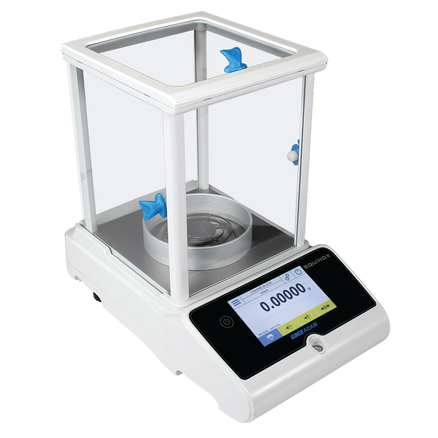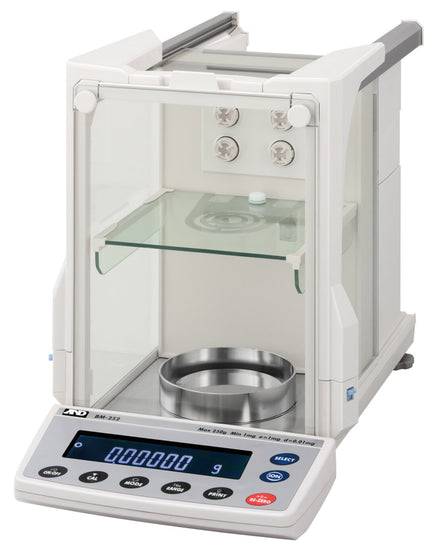
How Does an Anti-Vibration Table Work?
When you’re using highly sensitive balances, even the smallest disruptions in the environment, such as vibrations, can cause fatal errors in your results. To prevent this, it’s recommended to use an anti-vibration table to decrease the risk of errors caused by vibrations. How does that work? What else can affect your balance? Which balances should be used with an anti-vibration table? We answer all of that and more in this blog!
What is an Anti-Vibration Table?
An anti-vibration table, such as Adam Equipment’s AVT or Kern’s YPS-03, is used with highly sensitive equipment such as laboratory balances to reduce vibrations when weighing.


Why is it Important to Reduce Vibrations?
Would you expect to get accurate weight results from your bathroom scale during an earthquake? Of course not, the vibrations are too intense! However, vibrations are everywhere all the time, from footsteps, air-conditioners, even the roadwork at the end of your street. You may not notice these everyday vibrations, but your highly sensitive laboratory balance does! When you’re measuring to the fifth decimal place, it is crucial that your balance is free from any vibration that can disrupt your results, which is where anti-vibration tables come in!
How are Anti-Vibration Tables Constructed?
Block of Granite
Anti-vibration tables typically use a shock-absorbing material to absorb vibrations in a lab, as well as other precautions. Adam’s AVT and Kern’s YPS-03 both utilise scratch-resistant granite that is then placed on top of shock-absorbing rubber mounts. This helps to prevent movement from transferring between the granite and the tabletop or floor where the table is standing.
Structure
Anti-vibration tables are uniquely structured to eliminate vibrations. It consists of both an inner and an outer frame. The inner frame supports the granite slab, while the outer frame holds the tabletop surface. This prevents the tabletop surface from transferring vibrations to the slab and the balance, so you can place objects on the tabletop and it will not affect your results. Both frames feature rubber adjustable feet for further stability.
Other Than Vibrations, What Else Can Affect the Accuracy of a Balance?
Air Drafts
Just like vibrations, air drafts are all around us. A door shutting, people walking around, or even your own breath, if it’s too close to the weighing pan, can affect the accuracy of a highly sensitive balance. Many laboratory balances come with draft shields for exactly this purpose. Simply open the shield to place the object on the pan, then close it back up again for the most accurate results.
Static Electricity
Static electricity can also affect the accuracy of your balance. Static is when non-conductive materials accumulate an electrical charge on their surface. Stainless steel, typically used in laboratory balances, is a poor conductor of electricity, so it may accumulate an electrical charge on its surface without you realising it. You can tell if static electricity is affecting your balance if the readings aren’t quite consistent with the same item, or the results change when they’re not supposed to. To dissipate static charges, you can use an ioniser, so your results stay precise.
Types of Balances That Should Be Used with an Anti-Vibration Table
Generally, any balance that measures to the third decimal place or further should be used with an anti-vibration table, however force motor balances are more susceptible to being affected by vibrations than those balances that use load cells. Here are a few examples of highly sensitive laboratory balances that are best suited for an anti-vibration table:
Analytical Balances
Analytical balances are one of the most precise balances that you can use. Using an anti-vibration table guarantees that these results will be as accurate as possible. Analytical balances are typically used for research and quality control, precision counting and scientific education, among other purposes.
Adam Equipment Equinox Analytical and Semi-Micro Balance

Capacities: 120g – 410g
Readabilities: 0.0001g to 0.00001g
Adam Equipment’s Equinox is incredibly precise and offers a colour touch screen display for intuitive operation. It features advanced weighing functions such as parts counting, checkweighing, formulation, peak hold, percentage weighing, density determination and dynamic animal weighing. Equinox makes complex weighing tasks fast, simple and efficient.
A&D GH Series Analytical Balance

Capacities: 120g – 320g
Readabilities 0.0001g
A&D’s GH Series Analytical Balance features a large weighing chamber with anti-static coated glass. The GH offers internal calibration as well as parts counting and percentage weighing applications. If you’re looking for a wide variety of weighing units, the GH has nine to choose from, including Carats, Mommes, and Taels!
Precision Balances
You might assume so based on the name, but precision balances are actually less precise than analytical balances, though their results are certainly nothing to sniff at. Precision balances are also a bit less sensitive than analytical balances, so while vibrations may still affect results, air drafts and any other minor disruptions are less of an issue.
A&D FZ-i Precision Balance

Capacities: 120g – 5200g
Readabilities: 0.001g – 0.01g
A&D’s FZ-i offers four models suitable for use with an anti-vibration table. The FZ-i is a versatile and high-accuracy precision balance, the economic choice for those who want accurate results without breaking the bank. FZ-i features a Shock Absorber Function to prevent damage due to accidental overloading, as well as an Environment Setting, which allows you to set up to suit the operation area!
Adam Luna Precision Balance

Capacities: 220g – 15kg
Readabilities: 0.001g – 0.1g
Adam’s Luna Precision Balances offer over eight models (LPB) suitable for use with an anti-vibration table. This versatile balance has USB/RS-232 interfaces for use with printers and/or computer software. It features a large, grade 304 stainless steel pan and a sealed keypad for easy cleaning and protection against dirt and spills. This balance has the durability required in a laboratory balance!
Semi-Micro Balances
Semi-Micro balances are used to weigh very small items with very high precision, so they typically have both lower capacities and lower readabilities than analytical balances. Vibrations, air drafts and static electricity can all have a huge effect on semi-micro balances. Luckily, all these issues are avoidable by utilising draft shields, ionisers and, of course, an anti-vibration table.
A&D BM Semi Micro Analytical Balance

Capacities: 22g – 520g
Readabilities: 0.001mg – 0.0001g
A&D’s BM is our only microbalance! It features a static-resistant design with a fan-less ioniser, anti-static glass and evaporated metal coating. When used with an anti-vibration table, you will be protected from vibrations, static and air drafts all at once! It also offers parts counting, percentage weighing and density determination functions, so you’re not missing out on functionality with that amazing accuracy!
If you need help selecting the right anti-vibration table or laboratory balance for you, contact the Inscale team at 01908972660!

Leave a comment